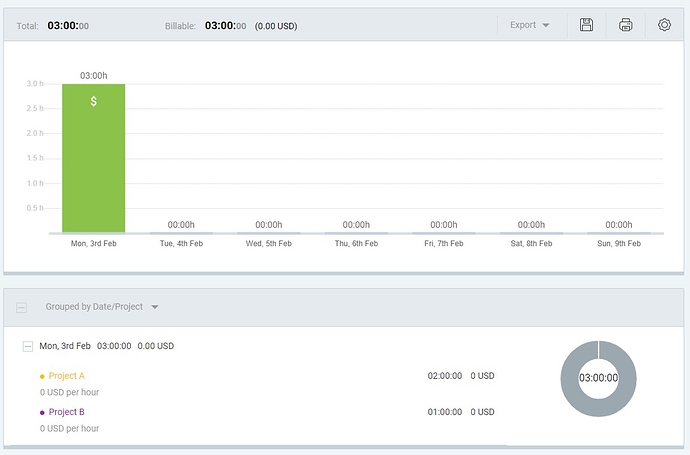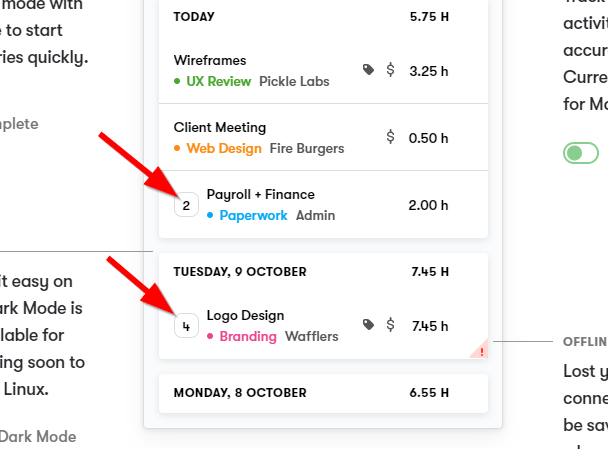After using the free version for about 6 months give or take, here are the top things that I find distract or take extra time out of my day.
-
When I create a new project on the fly (Windows app), it doesn’t let me set the default hourly rate. This means I’m constantly having to open the main interface, track down projects, open them one by one and enter the rates. This is the only field that would be nice to have at the time the project is created.
-
Any time I need to bulk edit many projects, I have to go through a long roundabout procedure. First I open the Projects screen, then I set up the filters needed to find my project list. Then I click on one to edit it. But now when I go back, all my filters are gone and I have to filter my projects again to select them.
The only way around this is to open every project in a new window and edit it there so I don’t lose my filters.
What would be nice is if opening a project simply happened in a popup or slideout page or something so that I don’t loose my filtered list. -
I do realize that some features need to remain in the paid version only, but I’d say the number ONE feature that would make time entries so much better on the free version, is to allow single running timers that don’t track start and end timestamps.
For example, if I work on 4 projects today, then all I need is 4 timers that I start and stop as needed. I don’t want to keep creating new entries every time I start and stop a clock. Then instead of 4 entries at the end of the day, I end up with 24 entries and I have to sit there adding all of them up to figure out the total time.
Knowing the exact start and stop timestamps is of zero use to me. All I want is total time spent on the particular project.
It would be hugely beneficial to allow this more basic way of tracking time. I’d even go so far as to say, it would be a paid feature to track all the start/stop timestamps in separate entries, while the basic/free way would be only tracking total time per project without timestamps. That’s just me though.
Again, it seems odd to consider this a pro/advanced feature to get a more simple/basic functionality, that doesn’t make sense.
I only track time so that I can a total number to invoice clients. Neither the clients nor myself care about every timestamp of starting and stopping entries. It is quite a hindrance actually.
For example, let’s say I start a project timer, but 3 minutes in I get a phone call about another project. I have to stop this timer and begin another one. The phone call lasts 10 minutes. Now I start the other timer again. I end up with these little 3 minute and 5 minute time entries all day long which are really annoying to deal with. All I want to do is click the “play” button from project to project and track a single counter. I hope this could be something to allow in the free version, as it’s really making the timer more basic in nature.
- I highly consider buying the paid version, but I feel that your pricing is incredibly off. For example $30/month for bulk editing and project templates, just for myself to enter time, is way too expensive. Even $10/month just for myself to get time rounding and reminders is a lot of money.
I feel like most all your paid features involve managing things for many users, but as a single user trying to track my time, most of these features aren’t needed, and therefore I can’t justify the expense.
I would love to pay a reasonable yearly fee like maybe $20, so that I can enter time in a useful way (ignore timestamps, rounding, extra fields, targets/reminders).
In other words, it makes sense in my mind to allow single (free) users to have all the features of entering time for themselves, and save the paid features for companies that use this for managing workers and multiple people.
This is just a thought, but really I could not justify $10 a month only to get rounding for example. That should just be in the free version by default, and instead have people pay for multiple-user abilities and other corporate features.
Thanks for your consideration and a great tool so far!



